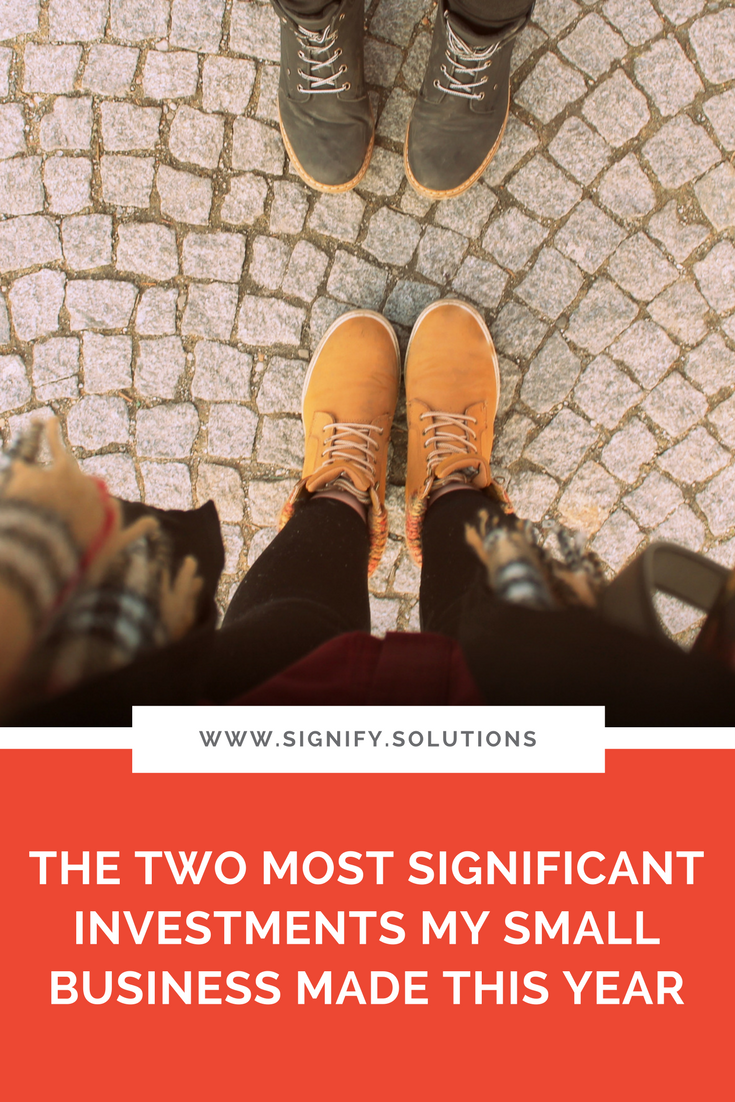Since I pump out new blog content every week, it stands to reason that you may have missed a post or two in the hubbub of your workdays. But my goal is to continually provide marketing and communication information, resources, tools, and tips for nonprofits and social enterprises—and the people who lead and run them. I do this because I want to see you get noticed and grow.
However, if you're short on time and playing catch-up, I've done the hard work and narrowed it down to this year's top five posts. So, grab some coffee, a snack, and start reading . . .
1. A COMPARISON OF 13 POPULAR SOCIAL MEDIA SCHEDULING TOOLS
Even as a marketer, I know that I should be marketing my blog posts much more than I am actually writing them, but they both have to get done, so my time is always split. It's a common frustration many of us share, right?
There are, of course, a lot of ways to get traffic to your site, but for most of us, the day in and day out formula revolves around social media. And if you spend several hours writing a blog post, but only promote it on social media a couple of times, it could easily go to the internet graveyard. #RIP
So, what's the solution? I think it might be a social media scheduling tool, especially if you do not have someone who is solely dedicated to your social media strategy. There are a lot of popular options out there, and I took the time to review 13 of them. None were perfect (though some come close!), and several were quite similar, but I think you'll find some great choices for your nonprofit or social enterprise.
2. 8 WAYS YOU'RE SABOTAGING YOUR LAUNCHES (AND HOW TO FIX THEM!)
Every launch is a big deal. It takes your valuable time and resources, not to mention oodles of effort. So, whether it's the launch of a new website, a book, a campaign, an event, or a product, it needs to get the job done. After all, you don't have time to waste. I know this because I know many others like you, and you've got too much on your plate for missed opportunities.
But what happens when a launch is just okay? Or maybe it's good, but it wasn't as good as you'd hoped. Or, sadly, what if it flops? (FYI, even successful launches have room for improvement.)
No matter which of these situations you find yourself in, I've observed a number reasons throughout my career in marketing, PR, and events (among other things) that may be causing you to unconsciously sabotage your launches. I'll touch on eight of them here. But don't worry, there is hope! I'll also show you how to fix them so that your next launch is your best yet.
3. WHAT YOU NEED TO CONVINCE POTENTIAL SPONSORS AND PARTNERS
Whether you're a nonprofit or for-profit social enterprise, chances are that you're on the hunt for a corporate sponsor or partner. It could be for a long-term initiative, upcoming event, or special campaign.
And why wouldn't you be? Corporate sponsors and partners bring in new revenue, as well as a new audience that is potentially untapped by your organization or cause. The benefits to you are crystal clear.
However, have you stopped to think about what you bring to the table? There's plenty in it for the companies you're asking as well. Never sell yourself short.
These kinds of collaborations are called "cause marketing," and friends, I have really good news. There is no better time for it, and I'm about to tell you why. The bad news is that you may have the wrong approach.
(By the way, do you need a sponsor/partner presentation template?)
4. 10 TOOLS TO MAKE YOUR SMALL BUSINESS LOOK MORE PROFESSIONAL (MOST ARE FREE!)
I'm not sure running a small business will ever get easier, because I don't really know anyone, anywhere, at any size company who wishes they had more to do. But when you have a larger team, you at least have more of a division of responsibility. So, it can be challenging to look like a larger organization when it's just you at a desk in your guest bedroom, or just you and a few friends who decided to jump in and solve one of the world's problems over coffee one afternoon. However, looking more professional, like a large business would, can often mean more sales or donations, more support, sponsors, and more attention.
So, how do you make that happen? I still have a lot to learn myself, but here are just a few of the tools that help my one-woman show look a wee bit bigger and more professional.
5. HOW TO EASILY INVEST IN YOURSELF AND YOUR ORGANIZATION
First of all, I'm not just talking about throwing money at the latest software, or buying fancy computers, or getting team t-shirts, though that would be snazzy. I'm talking about the "deeper" investments for personal and professional growth, which leads to added value and growth for your organization.
When you invest in yourself personally, you knowingly—and unknowingly—apply that new knowledge and experience everywhere around you. So, even then, you're benefitting your organization. And when you invest in yourself for your job, or on behalf of your organization, your directly applying that new knowledge to your role and your cause. Intentionally investing in yourself also often provides renewed energy, focus, determination, know-how, and purpose. So, why not get on board?
And those are this year's top five posts! What did you enjoy? Did you have a different favorite?
PSST: Don't forget that you only have a couple more days to try and win a Communications Strategy Session, valued at over $500! Details here. Resolve to make your marketing better in 2018.
PIN THIS POST FOR LATER:
I'm Kristi Porter, and I started Signify to provide writing, consulting and strategy services to nonprofits and for-profit organizations with a social mission, primarily through copywriting, marketing, and business communications. I believe that cause-focused organizations like yours are the future of business. You're proof that companies can both make money and do good. And I'm here to help you get noticed and grow. When you succeed, we all win.


































